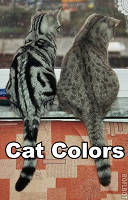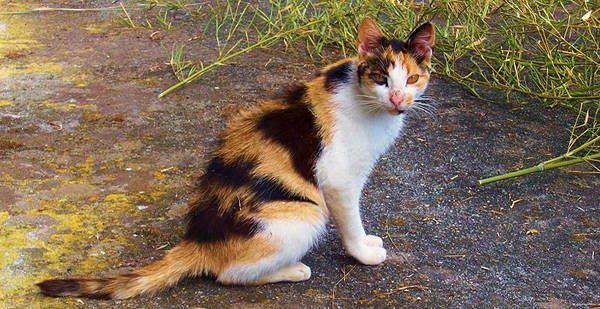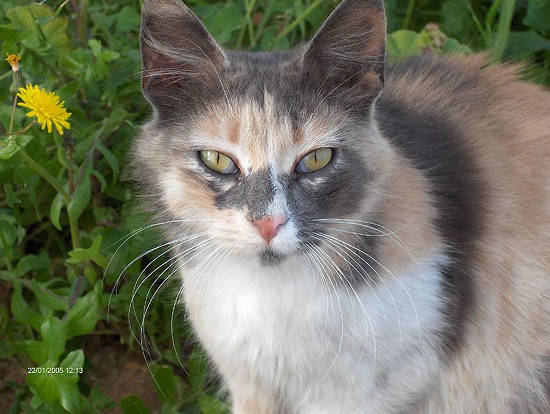Calico Cat Colors
 The calico is not a breed of cat, but rather a coat coloration that can be found in many different breeds. However some breeds have specific guidelines as to what % of the coat may be white.
The calico is not a breed of cat, but rather a coat coloration that can be found in many different breeds. However some breeds have specific guidelines as to what % of the coat may be white.
Classic Calico
This is a tri-colored pattern with definite patches of red or orange, white & black fur. These colors can be diluted to lighter variations of the same, (called dilute or pastel calico). Their colors are lightened to a cream instead of orange & blue instead of black…white hair remains the same.
Mistaken Identity
Calico’s can be mistaken for other coat patterns but they are fairly easy to identify. Their distinct spots must be of a solid color (often the color runs along the topline while the undersides are generally white). If the orange & black hairs are mixed then they aren’t calico but tortoiseshell (we’ll look at them in more depth as well).

Interesting Calico Fact
Calico cats are almost always female due to the genetics of this coloration. Males that have this coloring are genetic anomalies, they are very rare and generally sterile.
We LIke the Pastel
Although we love the stark contrast of orange, black & white, the diluted pastel calico colors are so soft & creamy. Be sure to learn more about solid cat colors and tabby patterns & colors (both classic & spotted).

im part of ur self…. i am ur self
lolwat?
Some more detail about why calicos are female:
In cats, like in humans, sex is determined by the X and Y chromsomes, with females having XX and males having XY. The X chromosome is much larger than the Y and contains a lot more genetic material. To compensate, in a female, most cells turn off the majority of genes on one X chromosome. Which X is turned on or off is randomly determined, but when a cell that has inactivated one X divides, the daughter cells will have the same X inactive. This tends to produce clumps of cells with the same X inactivation pattern.
In bicolor cats, the color of the non-white patches is determined by an X-linked gene. So a male bicolor orange-and-white will have an orange allele on his single X chromosome, while a male bicolor black-and-white will have a black allele there. A female bicolor has two copies of the same allele, so her coloration is the same regardless of which X is active.
However, imagine if an orange-and-white male mated with a black-and-white female. The male kittens, who inherit an X chromosome from their mother and a Y from the father, would be black-and-white. However, the female kittens would have an X chromosome from each parent, with a black allele from their mother and an orange allele from their father. The result: their colored blotches can be either orange or black, depending on which X is active. Since most females have a mix of both X chromosomes activated, the result is a cat with both orange and black blotches.